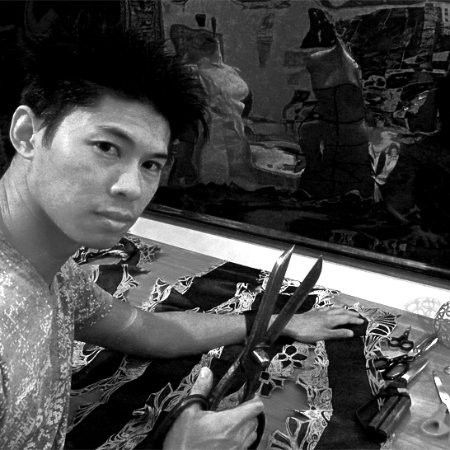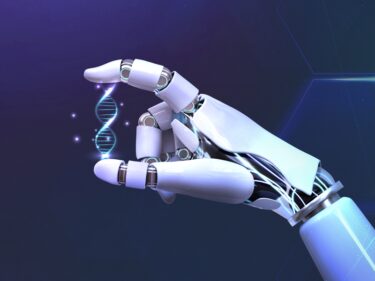The misconception that fashion designing is not for students of Science, Technology, Engineering and Mathematics (STEM) is steadily being busted. On the contrary, STEM knowledge might just be what is required in the competitive industry of fashion designing.

Dr. Mark Liu
“It is impossible to grasp the underlying science of sustainable fashion and its complexity without STEM literacy”
With ethics entering the fashion field, sustainable designers like Dr. Mark Liu, are trying to connect fashion and science, and opening up new opportunities, such as teaching STEAM (Science, Technology, Engineering, Arts, and Mathematics) skills through fashion design.
The Sociable spoke with Dr. Liu, whose work as a fashion and textile designer focus on advancing fashion design through the use of scientific principles in traditional techniques.
“STEM is an essential tool for the fashion industry of the future. It is impossible to grasp the underlying science of sustainable fashion and its complexity without STEM literacy,” he says.
Ethical Issues in Fashion
As fashion designers and textile producers are motivated to design environmentally friendly and without cruelty, ethical issues in fashion are emerging, for which STEM knowledge becomes important.
“Without STEM knowledge, you will never be able to question or challenge existing practices in a nuanced way, because you will just be quoting other people’s work that you don’t really understand,” Liu envisages.
Read More: An app that gives you fashion advice in real-time when faced with a dressing room dilemma?
With ethics in fashion, sustainable fashion is catching up, which embraces a slew of STEM subjects.
“There are key ethical decisions to make and it is difficult to have an informed opinion if you are STEM illiterate. Material science, green chemistry, thermodynamics, without them sustainable fashion becomes a perpetual motion machine with no link to reality,” the designer says.
A Future of Science-Based Fashion Designers
Many fashion designers are looking to tech up their designs now. Glitch, a fashion company, is using AI to design its clothes.
This April, Sylvia Heisel, a pioneer in the 3D printed fashion space, had her project, the “Names Dress,” a 3D printed gown, on exhibition for 1 year at the Ferragamo Museum. The piece shows off STEAM in its possibility of new flexible materials, ability to personalize design, accessibility of new 3D design tools, and sustainability of making products using zero waste.
Talking about companies like Glitch, Liu says, the world will definitely see more green tech chemistry to recycle old garments into new fibers, for which, a lot of inventing will be needed to develop and optimize this technology.
However, he also says that taking the latest tech from Silicon Valley and applying it to fashion does not always work out.
“AI is a tool, just like any other. So finding appropriate uses of it are key. I find that fashion is a very special industry based on hundreds years of tradition. The devil is in the details, and sometimes, it’s about understanding how to use technology to build better garments in an industry that still runs on traditional techniques,” he says.
Read More: Women entrepreneurs in STEM still find themselves cash strapped
Dr. Liu predicts that the future will have more fashion designers with a science background, whether it’s material science, computer science, or synthetic biology.
“That is when things will get really interesting,” he says.
Non-Euclidean Fashion Patternmaking
Liu applied his PhD research at the University of Technology, Sydney in modern mathematics to traditional fashion patternmaking, and the results were entirely new fields of fashion, such as Non-Euclidean Fashion Patternmaking and Zero-Waste Fashion design, in which Mark is an acknowledged pioneer.
“For me, STEM is the key to so many of my inventions in fashion. Back when doing Zero-waste fashion, understanding the underlying geometry of fashion pushed my designs to a level of complexity and precision that would have been impossible without mathematics,” he says.
Non-Euclidean Patternmaking is based on the mathematics of curved Non-Euclidean geometry.
Liu’s PhD allowed him to see fashion through the lens of curved Non Euclidean geometry, increasing accuracy and resolving systemic problems in conventional patternmaking systems. It also allowed him to bridge into the geometry used by 3D scanners and 3D printers to experiment with new forms of fashion and textiles.
“Fashion as a STEM teaching tool was something I never anticipated, but now that I can teach principles of geometry and calculus through making clothing, I would love to take this knowledge to young people around the world who struggle with learning mathematics in a conventional classroom setting,” he says.
“AI is a tool, just like any other. So finding appropriate uses of it are key”
He hopes to, one day, use STEM to retrain garment workers around the world to upskill them into the high-skill jobs of the future.
Zero-Waste Fashion Design
Mark is also a recognized forerunner in the area of Zero-Waste Fashion design in the sustainable fashion movement in London. This grew from his research while completing a Masters of Textiles Futures at Central Saint Martins College. He ran a purely Zero-Waste Fashion label, which were exhibited in Estethica at London Fashion Week for several seasons.
His zero-waste fashion collection was commissioned by the Gyeonggi Museum of Modern Art in Korea for the Fashion Ethics “Wear Good” Exhibition 2009. Inspired by the book, The Fortune and the Bottom of the Pyramid by C.K. Prahalad, the collection was created without a sewing machine.
The idea was to show the possibility for an independent person to make it in the developing world even if they couldn’t afford a sewing machine. The collection explored drape, texture and movement through engineering textile design.
Students who think fashion is only art should think twice. Most colleges count fashion or textiles under the Department of Agriculture because of textile design. For example, knowledge in chemistry can help develop new fabrics that could change the runway. Also, cutting and sewing needs ratios, proportions, and algebra.












